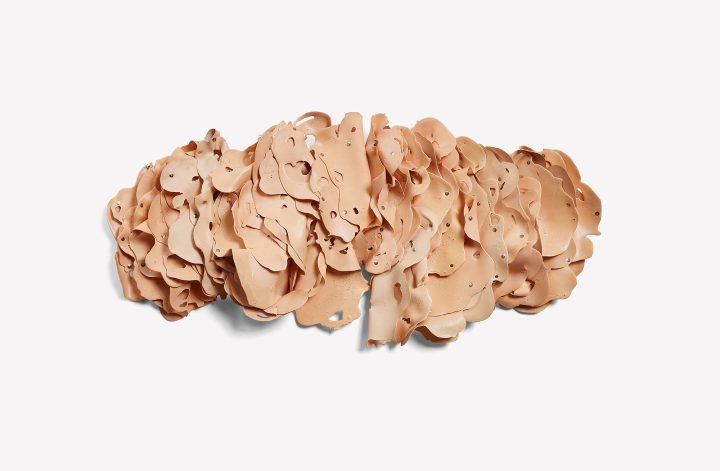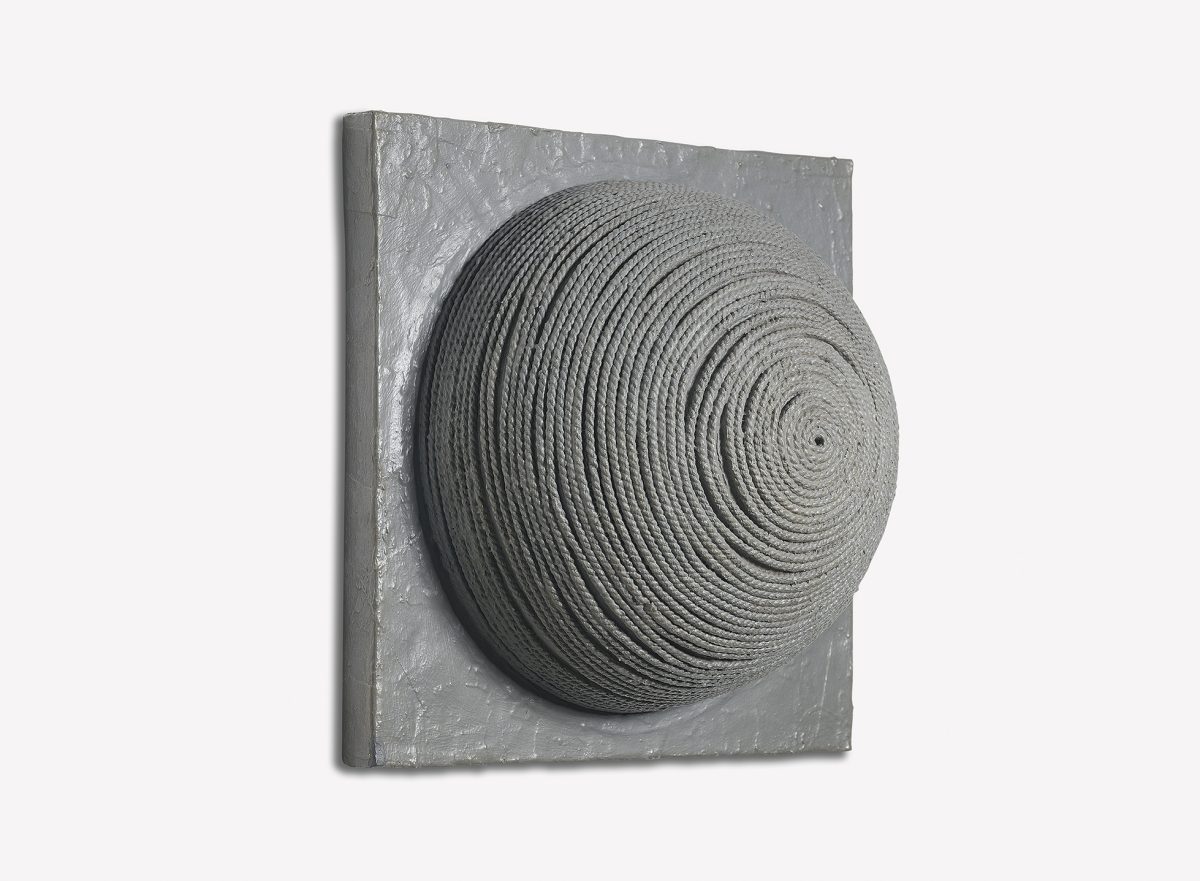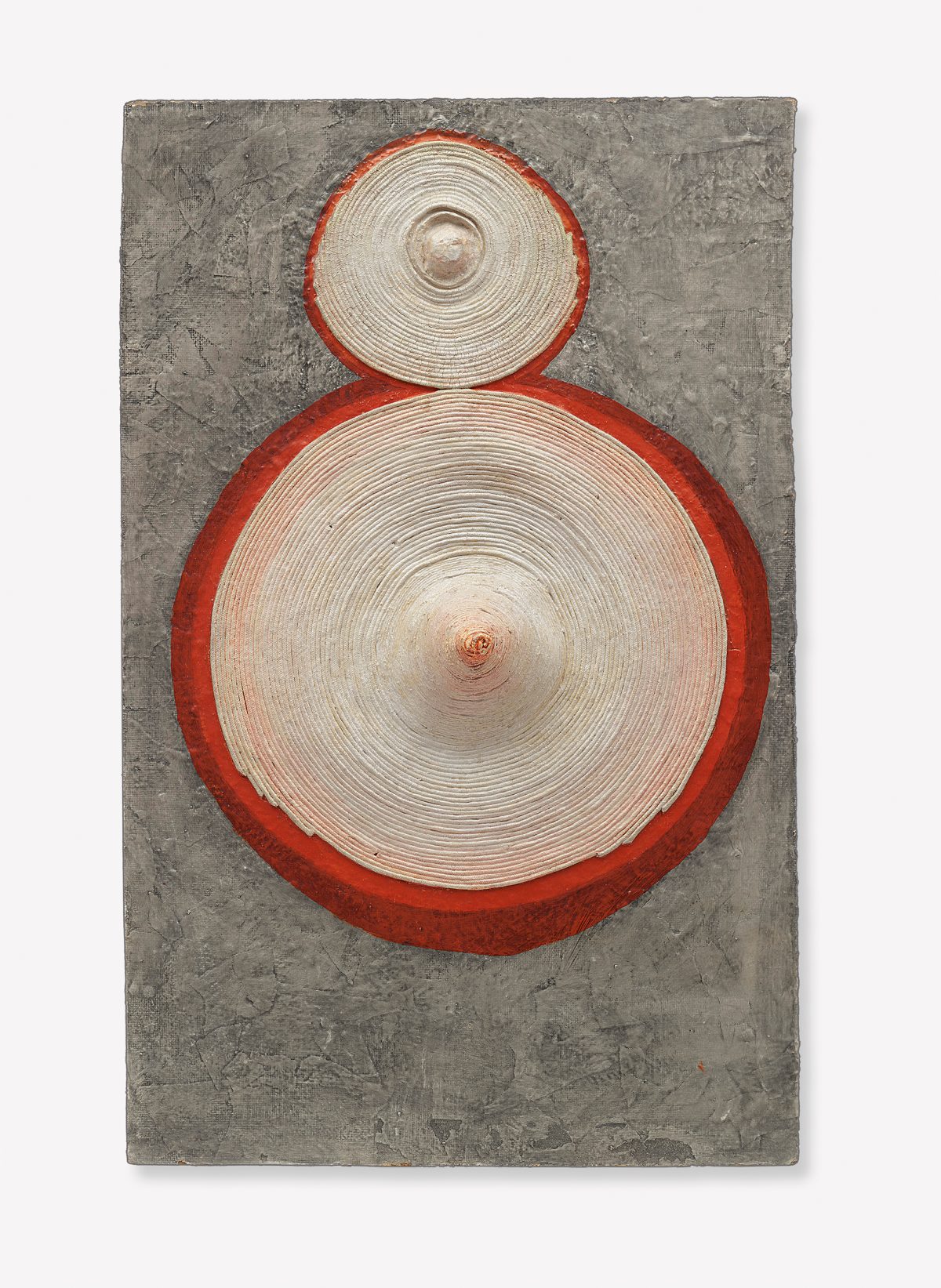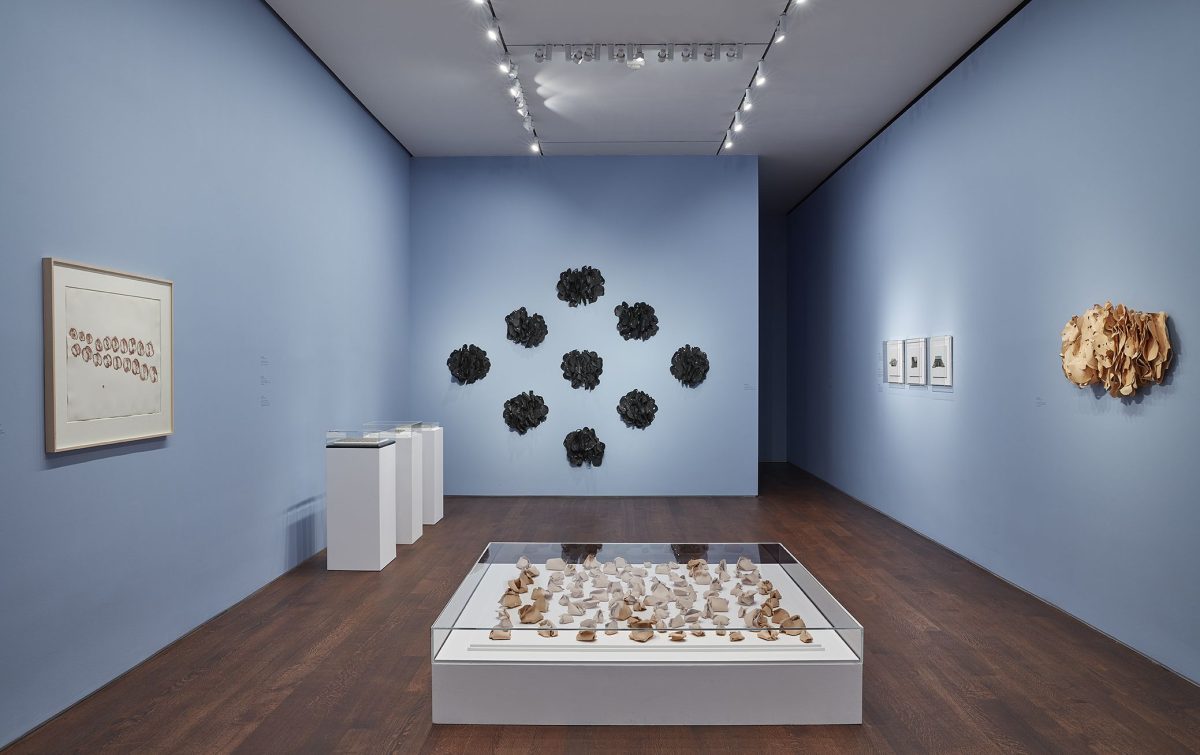
“If I can name the content, then maybe […] it’s the total absurdity of life,” the artist Eva Hesse once explained of her sculptures in May, 1970, shortly after undergoing surgery for cancer (Hesse died that same month, after being diagnosed with a brain tumor one year earlier).
Erotic Abstraction, a new show at Acquavella Galleries, highlights Hesse’s work and that of her contemporary, Hannah Wilke, impressing with its attention to the subversive absurdity shared by both artists. For both, this sense is rooted in forms and textures that evoke the body’s stubborn plasticity and resilience.

The show takes up two rooms on the gallery’s first floor, with Hesse’s works in the smaller one, and Wilke’s in the larger, where her two films, Gestures (1974) and Intercourse with… (1978), play on a loop in the back.
Hesse’s “Ringaround Arosie” (1965), which she made thinking of a pregnant friend, is a playful pun on Abstract Expressionism, a movement Hesse once identified with (her early paintings share an affinity with de Kooning). Hesse felt an even greater conceptual kinship with the Pop artist Claes Oldenburg who challenged Abstract Expressionism’s severe ethos, softening forms to ludic effects.

Hesse’s approach is equally irreverent. With a reduced palette — graphite background, two creamy swirls outlined in vibrant crimson; a large one below, a small one on top — “Ringaround Arosie” is an cheeky riff on contemporary conventions of abstraction. The circles’ bulbous protrusions disturb the streamlined composition, comically suggesting erect nipples or swollen bellybuttons. Upon seeing them, any sense of severity or the pristine quickly falls away.
Hesse repeatedly plays sturdier materials — such as an acrylic cord in “Untitled” (1966), a work that consists of a tightly wound coil, painted in shark gray — against softer ones, particularly in her use of papier-mâché (in that same work), and liquid latex, which became her primary medium in 1967.
In “(test piece)” (1967), a latex, cotton, and rubber sculpture, the orange-amber core appears molten, as if a half-burned candle, evoking wax-like softness. The slim cord that protrudes from inside the work wraps around it sensuously, though it also appears primal, resembling an umbilical cord. The sculpture nevertheless resists a complete identification with the erotic or the bodily. Instead, it slowly works on our senses, as we struggle to reconcile its oppositional contradictions, between the immediately identifiable and the unnamable and mysterious, the rigidly durable versus the fluidly ephemeral.

Wilke’s experimentations with materials likewise create environments whose suggestive eroticism is at once potent and diffused, pointing to abstraction’s underlying relationship to the body and to nature, and vice versa.
The melding of sculptural form and the body is particularly forceful in Wilke’s short performance-based film, Gestures, in which she molds and stretches her face with her hands. This sense of pliability also emanates from the artist’s sculpture, “Ponder-r-rosa 1” (1974) in latex, metal snaps, and push pins. Wilke emulates rose petals, but subverts an association to perishability by using more durable latex. She also alludes to the body, repeating the same black, labia-like fold to layer the nine sculptural blooms.
In Wilke’s other works on view, tiny vulva shapes appear as either hardened, rigid flesh, in endless permutations of openings and closings, or like earthenware, as if discovered on a primeval excavation site. Those works executed in the more brittle ceramics and terracotta are displayed in glass cases, the largest of which is laid out on the floor.

Meanwhile, the works in more pliable materials, such as paper and kneaded erasers, are mostly hung on the walls. With this variety, Wilke’s room, perhaps even more than Hesse’s, combines a repertoire of forms with contrasting textures, the latter constantly upending viewers’ expectations as to what’s soft versus hard. In a sense, this too is a sly commentary on Abstract Expressionism’s historically “hard,” macho ethos. To this end, Wilke calls some of her kneaded eraser sculptures, “Needed-Erase-Her,” a linguistic game that clearly deploys a complex play between eros and erasure.
Wilke’s absurdist sensibility is particularly striking in sculptures consisting of vintage postcards, to which the artist glued her kneaded, vulva-shaped erasers. The latter float against dreamy backgrounds that image/depict touristy nature spots and monuments. With “Long Key Florida” (1977), Wilke establishes a formally rigorous echo, between the rhythmic wooden boards of the train tracks, the perspectival rush towards the horizon, and the repeated hollow vulva openings glued above and around the tracks, disrupting the idyllic dreamscape. But she also draws our attention to the artificiality of each postcard’s original representation, suggesting that her sense of the incongruous extended beyond the erotic to earthly experience.
Eva Hesse | Hannah Wilke: Erotic Abstraction continues through June 18 at Acquavella Galleries (18 East 79th Street, Upper East Side, Manhattan). The exhibition was curated by Eleanor Nairne.
0 Commentaires